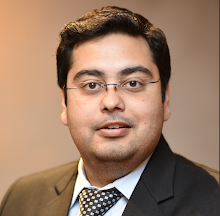Philips, connecting India for a healthy future Moots for connected care in India using Aadhaar
Bangalore, July 28, 2017: Philips Innovation Campus, successfully organized their third Digital Healthcare Conclave on July 28, 2017. The conference shed light on why connected healthcare is the need of the hour for our country and how it can solve the existing healthcare problems.
 Indian healthcare system has always grappled with 2 As - Accessibility and Affordability challenges. In 2015, there were 25354 Primary Health Center (PHC)s in India and 8.1% of these PHCs were without a doctor. To add to this, 38% of deaths are due to communicable diseases, maternal, per-natal and nutritional disorders, and 42% of deaths are due to non-communicable diseases. This burden will only increase as less than 15% of population is covered by insurance. With all these challenges, one can hear the wheels of Indian healthcare cranking hard and heaving to pull. How do we address this?
Indian healthcare system has always grappled with 2 As - Accessibility and Affordability challenges. In 2015, there were 25354 Primary Health Center (PHC)s in India and 8.1% of these PHCs were without a doctor. To add to this, 38% of deaths are due to communicable diseases, maternal, per-natal and nutritional disorders, and 42% of deaths are due to non-communicable diseases. This burden will only increase as less than 15% of population is covered by insurance. With all these challenges, one can hear the wheels of Indian healthcare cranking hard and heaving to pull. How do we address this?
While there has been a lot of innovations in healthcare where technology has shown the potential to find solutions, it is important that there is a common roadmap, strategy that would help the ecosystem work in tandem towards relevant solutions.
The challenge
Indian healthcare system is burdened with numerous challenges. While it is seen that innovative solutions using digital technologies have been able to address these challenges effectively, there is a long way to go. Connected healthcare solutions is a key to this. But for this to work, it requires an ecosystem where health data is available to care givers. But India lacks a common health data repository. The PHCs DHCs and CHCs are not connected.
Aadhaar is a possible solution to this.
The National Healthcare Policy 2017, talks about how connected healthcare is the solution to the existing healthcare problems in India. The policy suggests the setting up of a National Digital Health Authority (NDHA) to regulate, develop and deploy digital health across the continuum of care using digital technologies. It highlights the role of Aadhaar to make connected healthcare a reality by establishing a seamless and efficient National Health Information Network.
Philips has been at the forefront of using digital technology in healthcare. Its various connected care solutions have increased accessibility to care in remotest corners of the world, empowered patients to manage their health while also giving health providers tools to improve patient outcomes.
One such solution provided by Philips innovation Campus is their latest innovation- Mobile Obstetrical Monitoring (MoM). High fetal and maternal mortality rates continue to remain one of the major concerns in the healthcare space. The project will monitor pregnant women for early high risk identification via a new telehealth solution. This will enhance the performance of India’s Frontline Health Workers as they are the first point of contact with the healthcare system in the developing areas, allowing them to save many lives. The project will be a great step towards improved healthcare for the newborn and the mothers. A pilot study using MOM is being done in Shorapur Taluk in Yadagir District, Karnataka since December 2016. Philips has partnered with Narayana Health and National Rural health Mission, Karnataka.
While cardiovascular diseases have quadrupled in the last 40 years, 50% of the affected patients arrive too late for appropriate treatment. If the patient receives treatment within one hour of the attack- called ‘the golden hour’, possibilities of saving his/her life increase manifold. Philips Innovation Campus has developed the chest pain clinics to answer the problem. The Chest Pain Clinics are aimed at enabling small hospitals and nursing homes to provide timely and quality, ”Emergency Cardiac Care” and thus save lives. Each Chest Pain Clinic will be a clinic or a small healthcare facility equipped with Philips Efficia ECG-100 systems which will wirelessly transmit ECGs of patients in real time from the spokes (Chest Pain Clinics) to the hub. Once a patient is confirmed as suffering from a Myocardial Infarction, known as a Heart Attack, he/she is immediately transported via an ambulance from the Chest Pain Clinic, for primary Percutaneous Coronary Intervention (PCI) within the golden hour.
Another prominent example of their connected healthcare solution is their IntelliSpace Consultative Critical Care (ICCC) solution service. The state of the art hardware and software products that are provided as part of the solution enables clinicians connect to and monitor multiple intensive care units from a central location. Trained healthcare providers and intensive care nurses stationed at the command center can monitor the patients in the peripheral ICUs on a 24/7 basis. This saves costs for the patients and gets best care to them, even at remote locations.
Philips digital solutions have always worked towards making healthcare accessible to all through connected healthcare. They are focused at improving workflow in hospitals, reduction of infrastructure costs by leveraging the cloud, point of care devices to help in faster and early diagnosis, appropriate applications and remote monitoring that can help in extending the reach of doctors and specialists to areas where care was not available before. Their mission is to touch more than 3 billion lives by 2025. Hence they work towards creating meaningful innovations that will make healthcare that is accessible to all.
x



